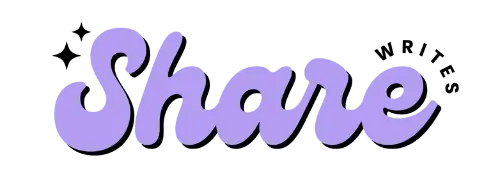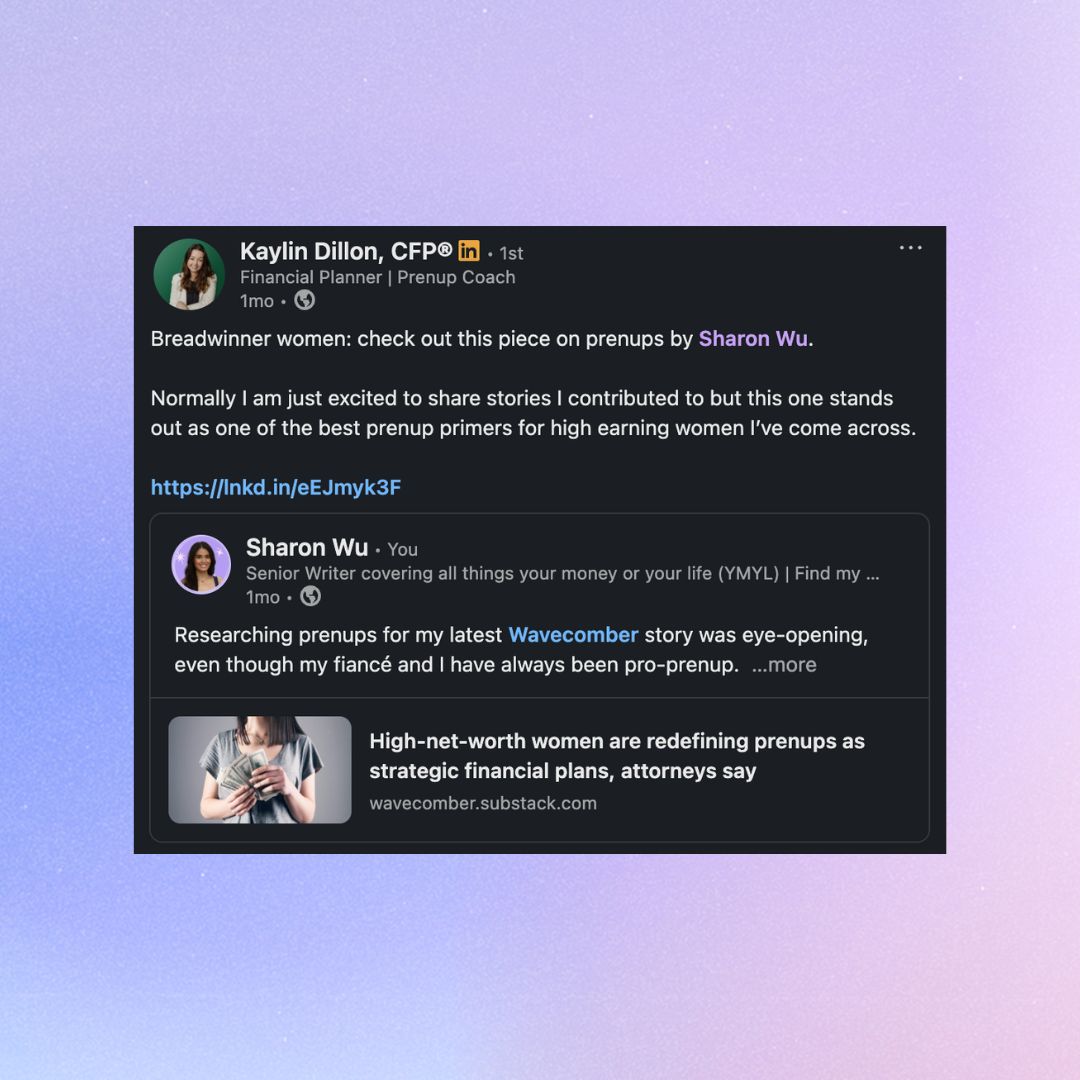Topic selection and counter-narrative development
While Financial Literacy Month naturally includes foundational topics like budgeting and savings strategies, I chose to also tackle prenups from a completely different angle — as wealth-building tools rather than divorce insurance.
I wanted to explore more complex financial planning territory that wasn’t getting much attention. So, I identified a gap where successful women were already using prenups strategically, but the narrative hadn’t caught up to the reality.
Industry expert collaboration
Before writing, I sought out and interviewed attorneys who work with high-net-worth women, as well as a certified financial planner who specializes in prenuptial agreements.
What I got weren’t theoretical opinions about prenups in general. They’re insights from professionals seeing this shift with real clients who have significant assets to protect. Their unique expertise and credibility elevate the entire piece from generic legal advice to targeted wealth management guidance.

Hook development
A strong lede is easy to read but hard to write. I drafted six different iterations before landing on the one I did. I decided to open with a direct quote: “I’m not planning for separation — I’m creating financial certainty for our future.”
That opening line does all the heavy lifting upfront. Instead of starting by acknowledging prenup negativity (which reinforces it), I led with the new mindset I wanted readers to adopt. It signals that this article will be different from every other prenup piece they’ve read.

Structure and format choices
The format of any long-form piece should match how people consume content — they want to scan for immediate relevance, then dive deep where it matters to them. In this instance, a pure listicle would be too simplistic for the audience, while pure prose would be overwhelming for such an intricate topic.
I used a hybrid approach — listicle format for readability, with substantial prose sections for depth. Bullets were used intentionally for practical elements while keeping complex legal and financial concepts in paragraph form to maintain nuance. I also broke up longer sections with relevant quote graphics (designed in Canva) and photos to maintain visual interest.
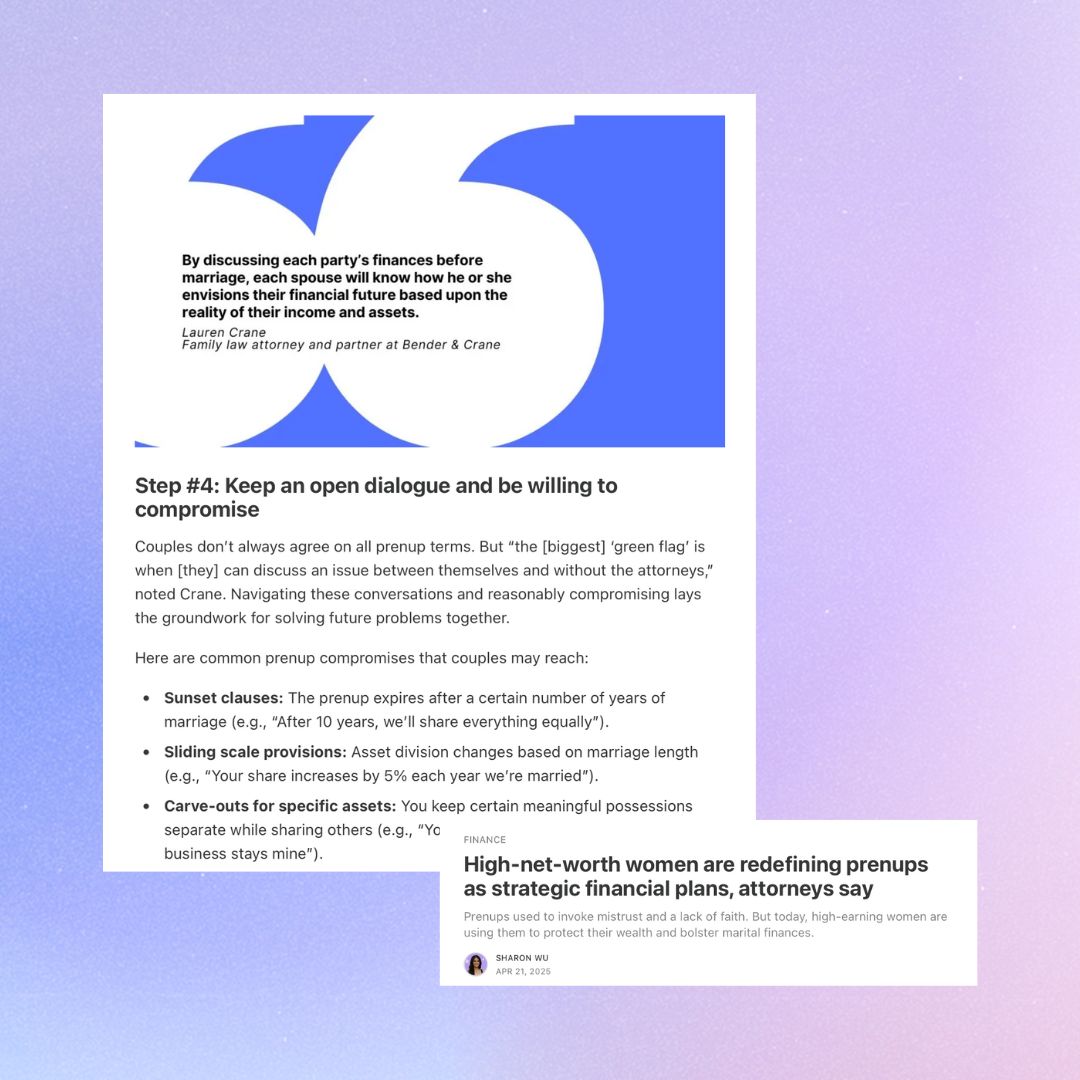
Real-world storytelling
In addition to explaining what prenup provisions exist, I included a concrete example showing how one of my CFP source’s clients actually used an income designation clause. The scenario demonstrates how the provision solves a problem — painting a vivid picture that it could work for the reader, too.
This transforms abstract legal and financial concepts into relatable situations. Instead of information dumping, I’m showing readers exactly how these strategies play out in real life with people facing similar circumstances.
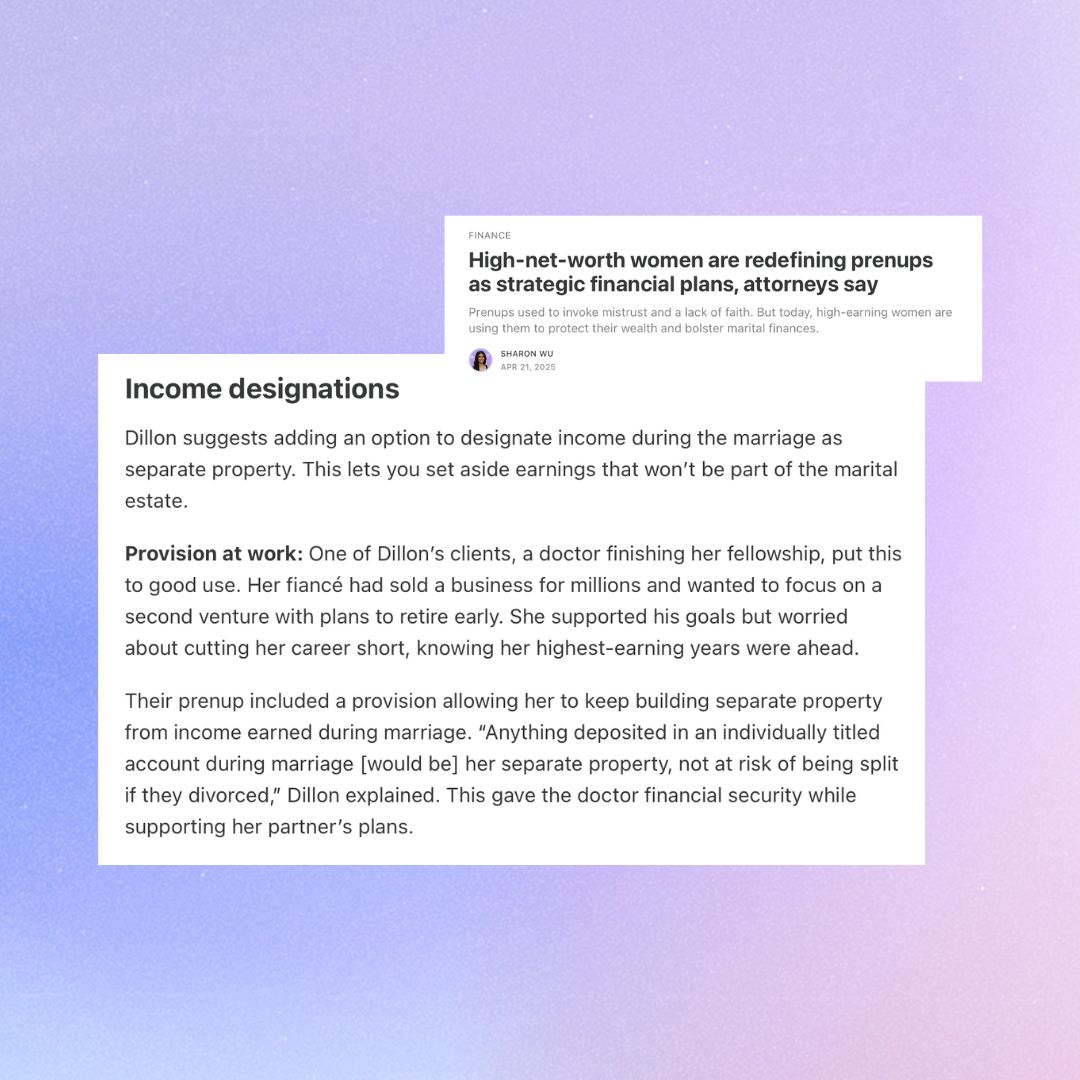
Expert voice weaving
I wove three attorney and financial planner voices throughout in a journalistic manner. This allows readers to get varied perspectives without feeling like they’re reading disjointed expert roundup content. The voices reinforce each other and build credibility progressively throughout the piece, with each quote advancing the overall story.
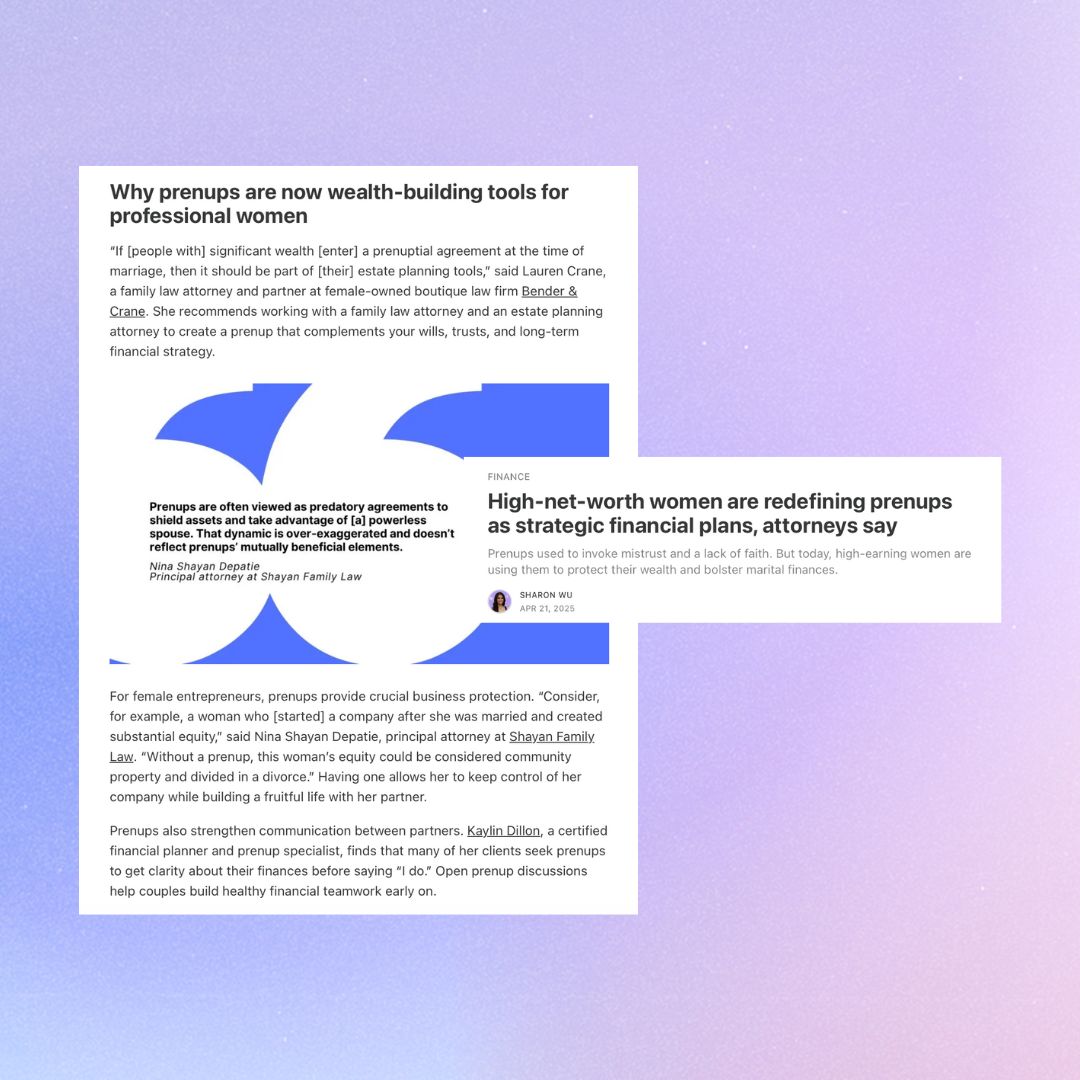
Tone calibration
With expert quotes well-organized and the draft written, I turned to tone calibration. Prenups touch on money, relationships, and gender dynamics — all sensitive areas where the wrong approach could alienate readers before they absorb valuable information.
This needed to feel sophisticated enough for high-net-worth women (and their partners) while remaining accessible and non-threatening. I aimed for a tone that conveyed authority without being clinical, and warmth without being too casual.
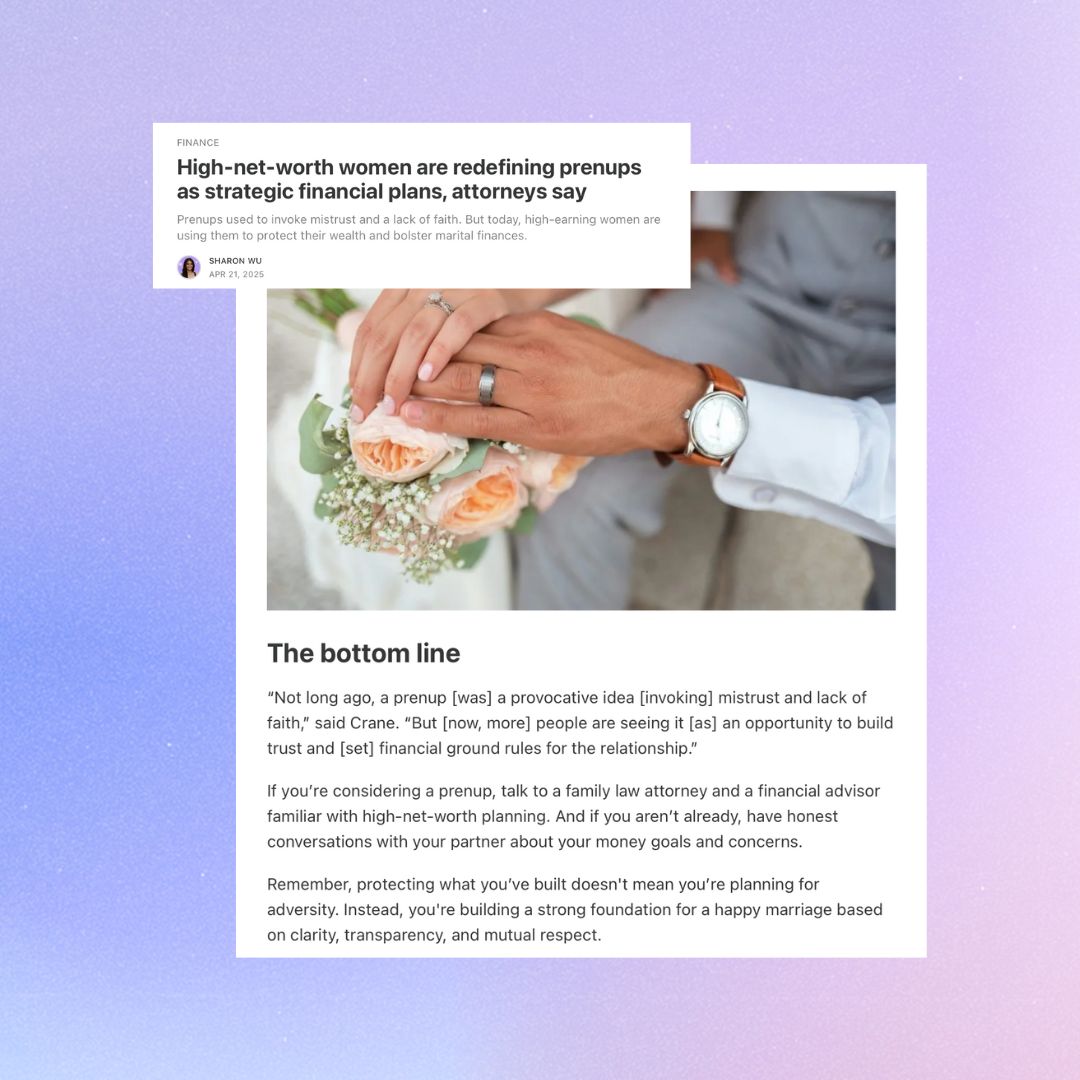
Intentional AI integration
AI is here and here to stay — and the best writers know how to use it without over-relying on it. For this story, I used AI to generate interview question ideas before speaking with experts, clarify dense legal concepts from expert quotes, and strengthen sections I felt could be more impactful. I also had it play “editor” to give me constructive feedback, so I could reflect on my work and use my best judgment to improve it.
Throughout the process, AI helped refine my ideas and execution. But every strategic decision, source relationship, structural choice(s), and editorial judgment came from my 11 years of writing experience. The final piece would not look like this without extensive back-and-forth driven by strong critical thinking — if you don’t know what to prompt or ask, AI can only do so much.
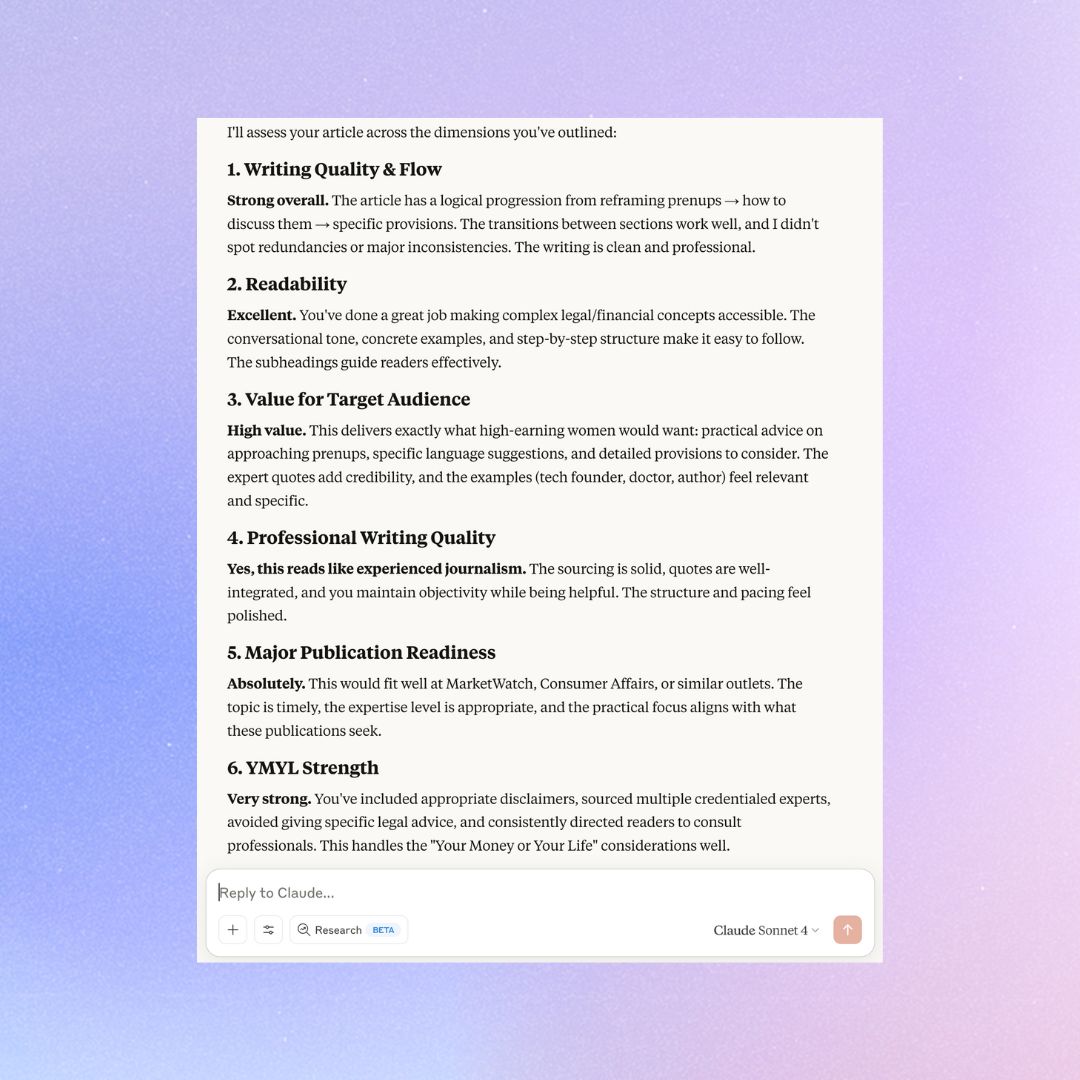
Independent fact verification
Even though the professionals I interviewed are highly credible, I independently verified all claims, statistics, and legal references mentioned in this story. This isn’t because I doubted the experts, but because fact-checking is a non-negotiable part of my process for every article.
I cross-referenced the legal concepts, verified terminology, and double-checked any factual assertions. This due diligence ensures that every claim can stand up to scrutiny — something especially critical for YMYL content, where readers are making important life decisions.
